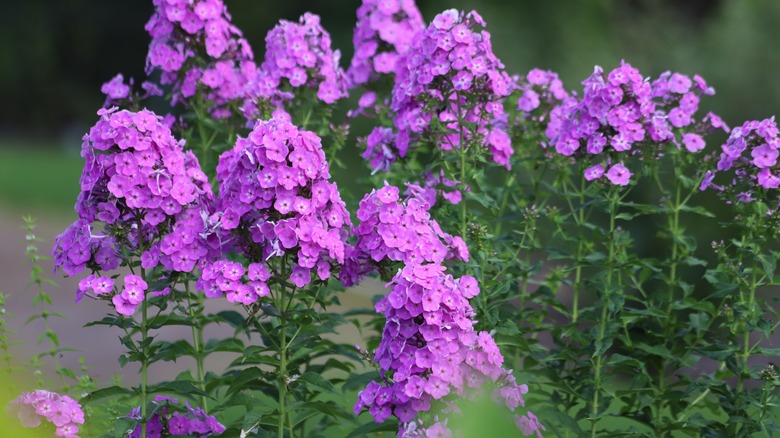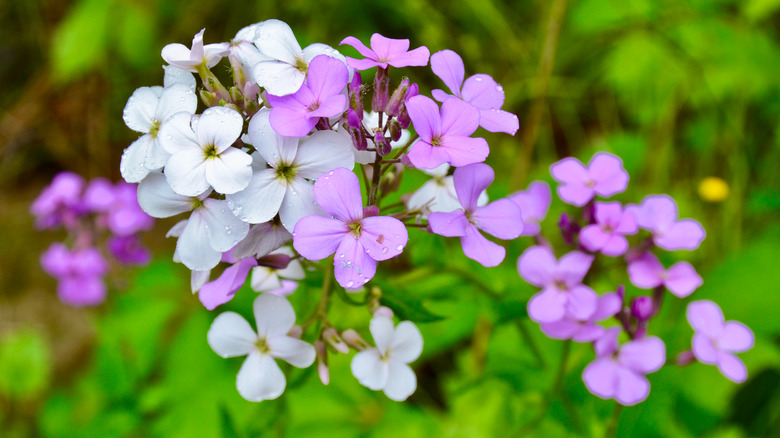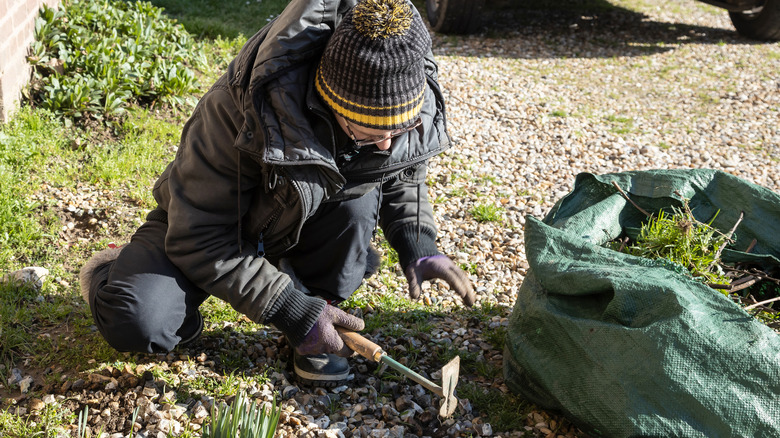Don't Confuse Phlox For This Invasive Weed (And What To Do About It)
When plant lovers see stands of vibrant purple flowers along roadsides or in gardens, phlox is usually their first guess. Unfortunately, it's easy to mistake phlox for a deceiving invasive weed called dame's rocket (Hesperis matronalis). Still, there's a good reason gardeners are so enthusiastic about phlox — it's not just beautiful and fragrant; it's also, with few exceptions, native to North America. There are many different species in the Phlox genus, including some like creeping phlox (Phlox stolonifera) which are too low growing to resemble dame's rocket, as well as others like prairie phlox (Phlox pilosa), wild blue phlox (Phlox divaricate), and of course the classic garden phlox (Phlox paniculata) which are far more similar looking to dame's rocket.
While not all species of phlox are native to all regions of the United States, none are considered invasive, and their appeal to butterflies, bees, and hummingbirds makes them ideal for pollinator gardens. A close examination of the leaves and petals should help you figure out whether you're dealing with phlox or dame's rocket. Once you know what plant you have, you'll be able to get to work on removing it if it's dame's rocket.
The differences between dame's rocket and phlox
Dame's rocket, despite looking very similar to many species of phlox, is not closely related and is actually in the mustard family. It is a biennial, and its white or purple phlox-like flowers don't appear until its second year of growth. It was brought to North America in the 1600s and spread quickly. It is now on the noxious weed list in several states.
Examining the flowers is one of the easiest ways to differentiate dame's rocket from all phlox species. While the flowers have similar colors and shapes, phlox always has five petals, as opposed to dame's rocket, which has only four. What time of year the flowers appear can also offer a clue, as dame's rocket flowers usually bloom in early summer, as opposed to phlox, which generally blooms later. Additionally, you can check the plant's leaves. Phlox's leaves are smooth and grow in sets of two directly across from each other on the stem, while dame's rocket's leaves alternate sides and are toothed.
How to remove dame's rocket and avoid accidentally planting it
If you've come to the sad conclusion that you're not growing phlox but dame's rocket, then there's nothing to be done but to start removing it. As tempting as it may be to leave a plant as pretty as dame's rocket in your garden, it does more than just outcompeting native flowers. Wisconsin Public Radio notes that it appears to encourage other invasive species like garlic mustard and buckhorn to take hold, so the sooner you eliminate it, the better. If possible, remove by hand. Adding invasive weeds to your compost pile can allow the seeds to spread, so instead, burn the plants or put them in a bag in your garbage. If you must use herbicides, it's best to wait until fall, when most native plants are dormant.
Thanks to the plant's biennial growth cycle and seeds that may already be in your soil waiting for an opportunity to germinate, don't get discouraged if it takes a few years to fully remove the dame's rocket growing in your yard or garden. Just be sure not to inadvertently reintroduce it back into your garden after putting so much effort into removing it. Many wildflower seed mixes include dame's rocket, so check the types of seeds in any mixes you use. Some users on TikTok say you should completely avoid buying wildflower seeds at a big box store for this reason.


